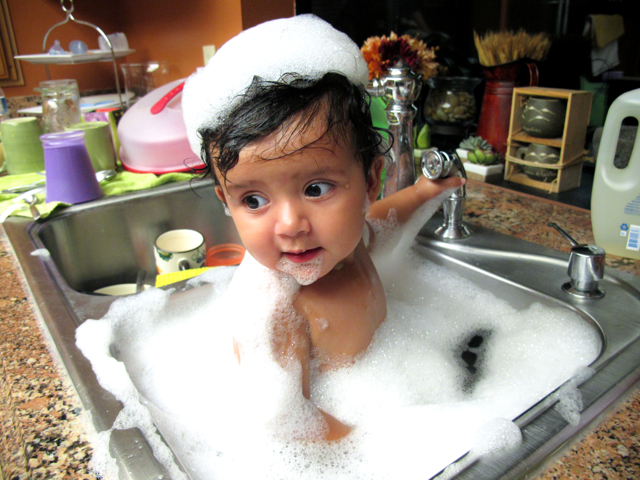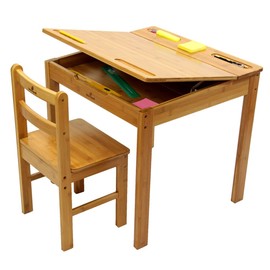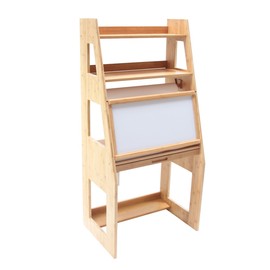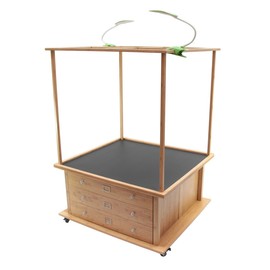- Take the bottles, jars, vials of different sizes, then unscrew the caps, mix them and suggest the child to find the right ones and screw them up.
- Take a sponge, a baby soap and tableware (better something unbreakable - metal or plastic). Slowly show how to wash them up and let the child to wash, for example, a kettle.
- Spill any cereals, corn flakes, rice, oats, etc. Give a small broom and a dustpan to your child and teach him or her to sweep.
- This exercise is a bit similar to the previous one: give your child a sponge, spill water on the tray and let them wipe it off.
- Find patches of different texture (silk, cotton, wool, etc.) Discuss them with your child: which one is soft, prickly, smooth, etc. Ask which patch the child likes to touch. Then mix the patches (pair of each fabric) and ask the toddler to find the matches by touch with their eyes closed.
- Throw small things (buttons, balls, decorative pebbles, mosaic or lego pieces) into the jar with water. Give your baby a spoon and ask him or her to fish them out. Attention! watch carefully for a child not to swallow small details!
- Find a small bag or a box, put 8-10 objects familiar to the child (a ribbon, a pencil, a comb, a favourite toy, etc.) With their eyes closed, the child takes the subjects out and names them. If you want to learn the letters, you can gather the subjets starting with the letter "A" (or then other letters). This way will help develop tactile abilities, and practice the skill to single out the sounds in the words.
- You'll need 2 plates and a sponge. Pour water in one plate and ask the baby to use a sponge to transfer water from one plate to another.
- Take different colourful things and ask the child to distribute it to different boxes according to the colour or size.
- Fill small bags with dried beans or peas. Hide small things or toys inside of one of them and ask a child to find it (that's a great exercise for fine motor skills).
- You'll need an ice mould, pincers, beads or berries. Ask the child to use the pincers to take the berries and beads out.
- Sprinkle the floor on the table (or tray) and ask the child to "draw" with their finger, brush or stick. This activity is quite similar to sand drawing.
- One more tactile exercise: let the child find beans hidden in floor and put them into a jar. Show them how to sift out the floor, so that the beans will remain in a sieve.
- Take a box without a lid and attach clothespegs along the perimeter of the box. Ask the child to take them off.
- You'll need a big magnet and different metal and not metal subjects. Let the child to see which things are magnetized and which are not.
- Fill the plastic bowl with water and add a drop of lotion into it. Give your child a whisk and ask to whisk lather.
- Take 3 different-sized pans and lids. Ask the child to pick the matching lids. Then ask the child to put pans one into another.
- Throw different small subjets (nuts, screws, beads, beans, lego bricks, cork, bottle cups, foil balls, etc.) into a vase or a tall glass with water. Observe and discuss which ones sink and which don't. Comment "light" or "heavy".
- To develop correlating arm movements and grabbing, offer your child to tear old newspapers and magazines into strips and pieces. But first, show them how to do it right: take the sheet with fingers of both hands and pull to different sides.
- Lacing the boots, tying simple knots, zipping and unzipping, doing and undoing velcro fasteners, fastening and unfastening buttons are very useful activities. You can buy special developing toys which have these accessories or you can just bring the clothes and examine them with your child.
For Parents and Kids
20 Simple Ways to Entertain a Toddler



